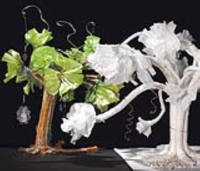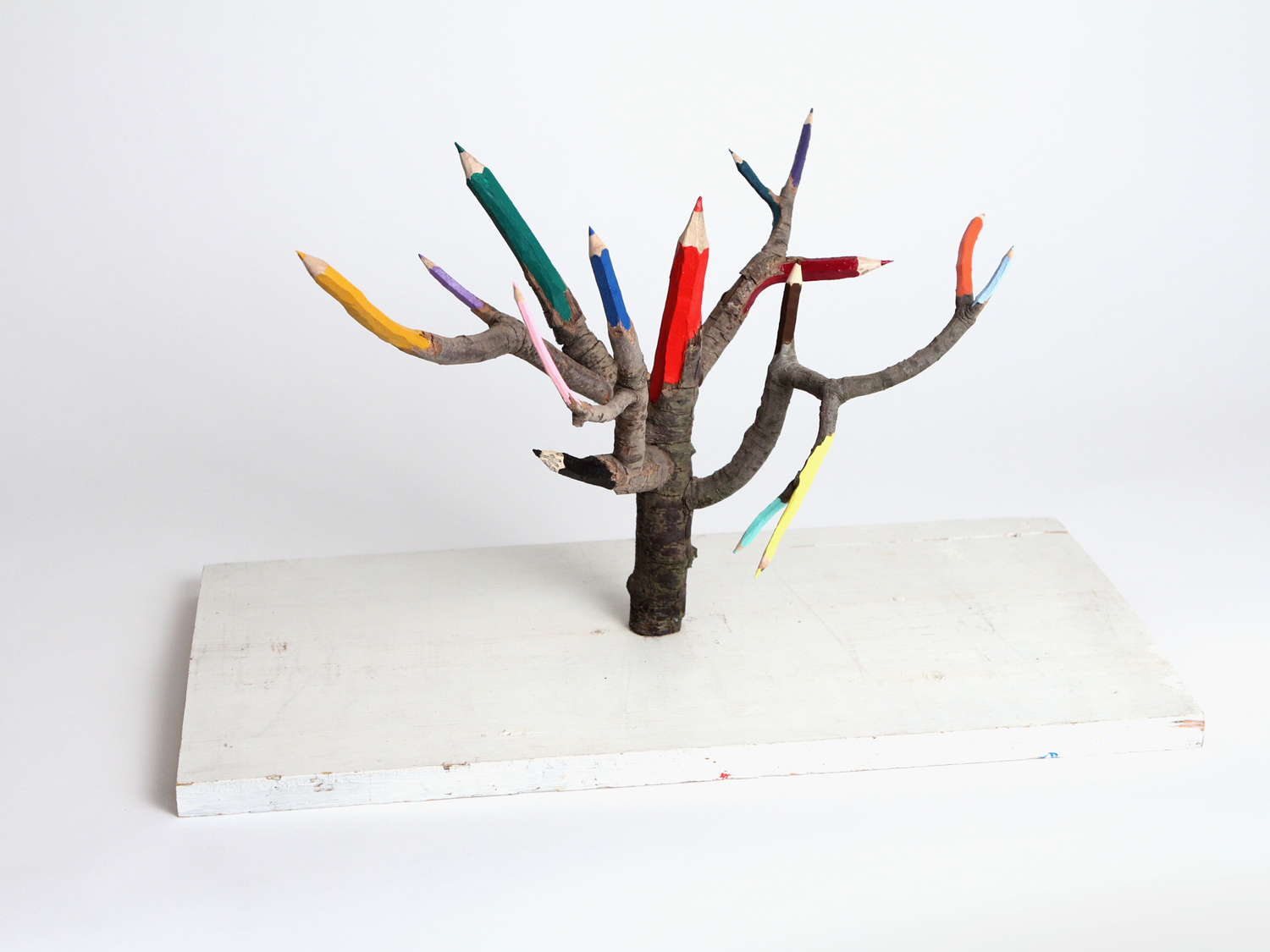
Blog 16
March 21, 2016
Sculpture Bought Materials
Spirit Tree Rope/Wirer Sculptures
History: Spirit Trees Legends are plentiful about connections between humans and trees — what will your special tree reveal about you?
Legends about trees have permeated cultures and theologies around the world since ancient times. The Tree of Life, the Tree of Wisdom or Knowledge, the World Tree, the Cosmic Tree — these are names for a symbolic or metaphorical tree that stories, ideas, and beliefs about life have been centered around. Nordic and Mesoamerican mythologies brought the concept that the world is supported on a strong tree that divides the realms of heaven, human existence, and the underworld. Native American legends regarding trees as caregivers and providers are abundant. The Cherokee call trees “The Standing People” and have a special fondness for cedar trees due to a legend in which the spirits of their ancestors were placed within a cedar. This "Spirit Tree" is created from lengths of coiling core, glued together and wrapped with wire to impart flexibility to the branches. It can be finished with paint and wire, and personalized with objects or images suspended from the branches or placed around its roots.
History: Spirit Trees Legends are plentiful about connections between humans and trees — what will your special tree reveal about you?
Legends about trees have permeated cultures and theologies around the world since ancient times. The Tree of Life, the Tree of Wisdom or Knowledge, the World Tree, the Cosmic Tree — these are names for a symbolic or metaphorical tree that stories, ideas, and beliefs about life have been centered around. Nordic and Mesoamerican mythologies brought the concept that the world is supported on a strong tree that divides the realms of heaven, human existence, and the underworld. Native American legends regarding trees as caregivers and providers are abundant. The Cherokee call trees “The Standing People” and have a special fondness for cedar trees due to a legend in which the spirits of their ancestors were placed within a cedar. This "Spirit Tree" is created from lengths of coiling core, glued together and wrapped with wire to impart flexibility to the branches. It can be finished with paint and wire, and personalized with objects or images suspended from the branches or placed around its roots.
GRADES 6-8 Adjust as needed.
Materials (required): Coiling Core-1/4" x 180 ft coil-share one across class/Coiling Core-1/2" x 100 ft coil-share two across class/ Aleene's Quick Dry Tacky Glue-4 oz -share three across class/All-Purpose Chipboard-30 ply-22" x 28"- share one sheet among 12 students/ Armature and Sculpture Wire-14 gauge- 350 ft spool-share one across class.
Optional Materials: Economy Glass Bead Assortment-1 lb / Copper Wire-24 gauge-100 ft spool/ Liquid Watercolor-assorted colors/ Crushed Pebbles-White/ Framed Up Jewelry Accents, assorted/anything else personal to the artist.
Optional Materials: Economy Glass Bead Assortment-1 lb / Copper Wire-24 gauge-100 ft spool/ Liquid Watercolor-assorted colors/ Crushed Pebbles-White/ Framed Up Jewelry Accents, assorted/anything else personal to the artist.
Preparation:
1. Cut coiling core into 12" sections. Plan on five pieces of 1/2" and five pieces of 1/4" per tree (10 ft total). Coiling core may be cut with sturdy scissors or with a paper trimmer.
2. Cut 7" to 8" square bases from chipboard, scraps of cardboard, or matboard.
Process
1. Bend all coiling core lengths against the curve to straighten as much as possible.
2. Gather five pieces of small coiling core into a bundle. Stagger lengths. Bind with masking tape towards the bottom.Process, continued
3. Create the tree trunk. On a large piece of coil, apply a line of glue about 2" long below the center of the length, but not all the way to the end. See illustration (A). Position the coil with the glue side against the bundle of small coils and hold briefly until glue begins to grab. Repeat with remaining large coils, staggering their lengths as well, until they surround the bundle of small coils. Wrap with masking tape to secure while the glue dries. NOTE: The upper 9" of the coils will remain unglued and can be spread apart to begin positioning of branches.
4. Glue the short, loose ends of the paper coil bundle to the square base, pressing down and spreading them apart to form the roots of the tree. Apply masking tape to the roots to hold the tree upright on the base while the glue dries.
5. Bend and twist the long, loose ends of the paper coils to create tree branches. Loosen the ends of the coils and gently spread the paper to create leaf-like fullness on the end of each branch.
6. Insert wire sections into the trunk of the tree. The wire may be bent and curled to make more branches or vines. It may also be wrapped around individual branches to make them easier to bend, to hold them in place and to suspend objects from the branches.
7. The Spirit Tree may be left white or painted.
Options — Glue pebbles, sand, or dried moss to the base to cover the chipboard. — Hang beads, charms, photos, or other objects from the branches with wire or string. Glue strands of cotton or wool to the branches to imitate moss.— An alternate lesson plan could focus on the Japanese art of bonsai.
Options — Glue pebbles, sand, or dried moss to the base to cover the chipboard. — Hang beads, charms, photos, or other objects from the branches with wire or string. Glue strands of cotton or wool to the branches to imitate moss.— An alternate lesson plan could focus on the Japanese art of bonsai.
Art lesson from http://www.dickblick.com/lesson-plans/spirit-trees/





No comments:
Post a Comment